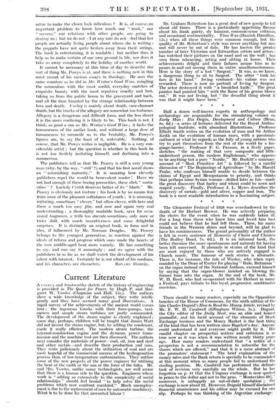Current Literature
A Kscrui, and trustworthy sketch of the history of engineering is provided in The Quest for Power, by Hugh P. and Mar- garet W. ' Vowles (Chapman and Hall, 15s.). The authors show a wide knowledge of the subject, they write intelli- gently and they have secured many good illustrations. A rapid survey of the achievements Of the ancient world comes first ; the ingenious Greeks with their force-pumps, taxi- meters and simple steam turbines are justly commended. The development of the steam engine is clearly explained ; some day, perhaps, children will be taught that James Watt did not invent the steam engine, but, by adding the condenser, made it really efficient. The modern steam turbine, the internal-combustion engine and the dynamo, power trans- mission and the machine tool are then discussed. The authors next consider the materials of power—coal, oil, iron and steel and other metals—and describe their production and uses. They write judiciously about the utilization of coal and are more hopeful of the commercial success of the hydrogenation process than of low-temperature carbonization. They outline some of the new projects of the power engineer for utilizing the heat of the earth or the sun or the force of the tides. Mr. and Mrs. Vowles, unlike many technologists, are well aware that there is a human side to the question. Engineers whose work is " adding so extensively to the complexity of social relationships " should feel bound " to help solve the social problems which now confront mankind.". Much unemploy- ment is due to the replacement of men by automatic machinery. What is to be done for that unwanted labour ?


































 Previous page
Previous page